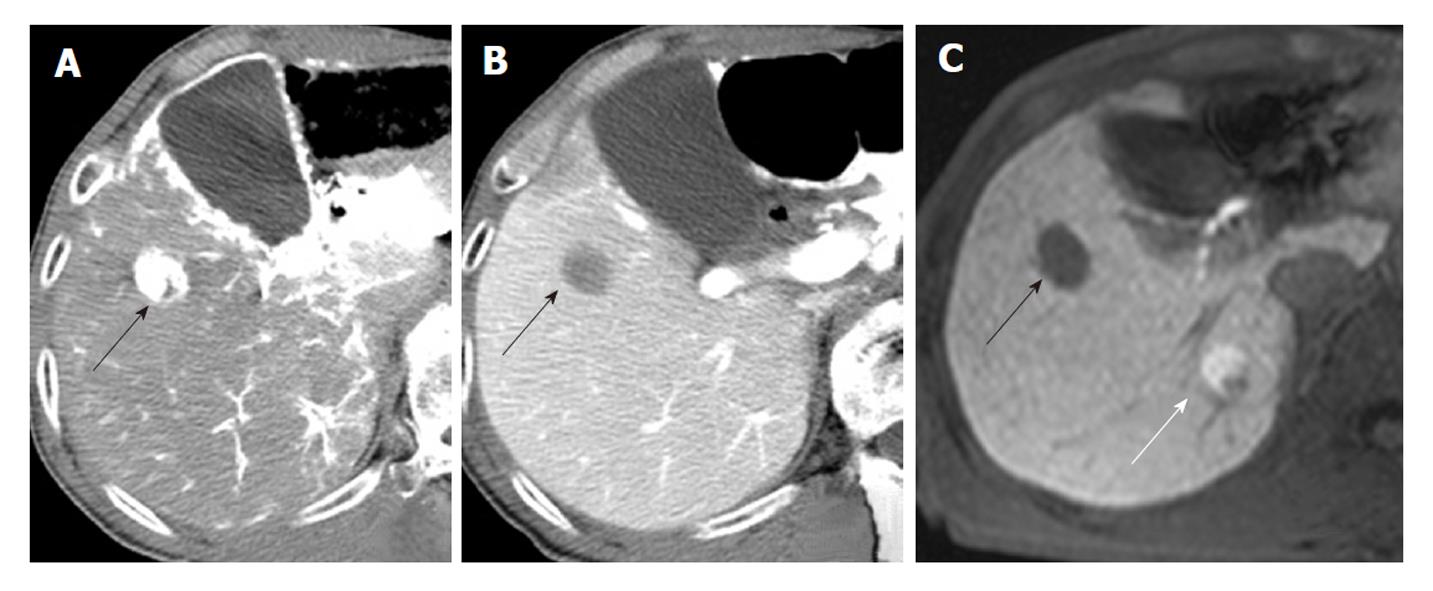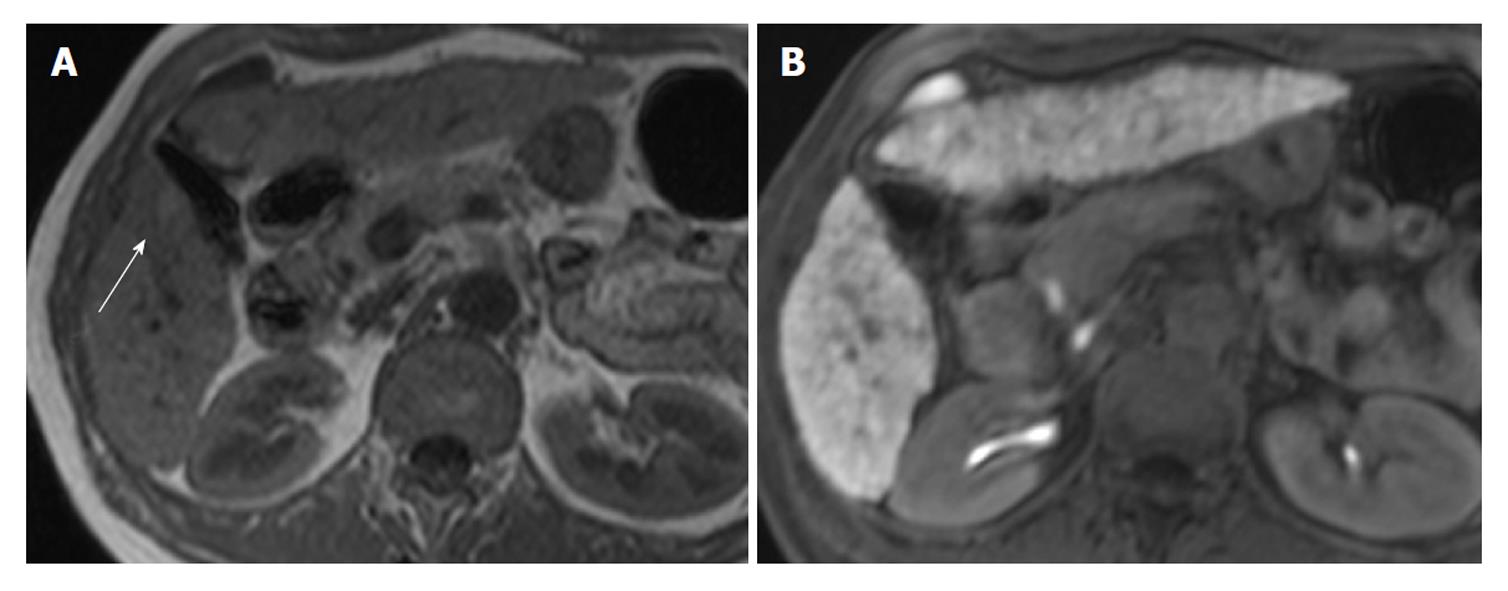Copyright
©2011 Baishideng Publishing Group Co.
World J Gastroenterol. Aug 14, 2011; 17(30): 3503-3509
Published online Aug 14, 2011. doi: 10.3748/wjg.v17.i30.3503
Published online Aug 14, 2011. doi: 10.3748/wjg.v17.i30.3503
Figure 1 A 69-year-old man with moderately differentiated hepatocellular carcinoma.
A: Computed tomography (CT) hepatic arteriography shows hypodensity; B: CT during arterial portography shows isodensity; C: Lesion clearly shows hypointensity in the hepatobiliary phase during gadoxetic acid-enhanced magnetic resonance imaging (arrow).
Figure 2 A 72-year-old man with well differentiated hepatocellular carcinoma.
A: Computed tomography (CT) hepatic arteriography shows faint hypodensity; B: CT during arterial portography shows faint hypodensity; C: The lesion clearly shows hypointensity in the hepatobiliary phase on gadoxetic acid-enhanced magnetic resonance imaging (arrow).
Figure 3 An 80-year-old man with poorly differentiated (black arrow) and well differentiated hepatocellular carcinoma (white arrow).
A: Poorly differentiated hepatocellular carcinoma shows hypervascularity on computed tomography (CT) hepatic arteriography; B: Hypodensity on CT during arterial portography; C: Hypointensity in hepatobiliary phase on gadoxetic acid-enhanced magnetic resonance imaging (MRI). The lesion is not visible on CT hepatic arteriography (A) or on CT during arterial portography (B) and shows hyperintensity in the hepatobiliary phase on gadoxetic acid-enhanced MRI.
Figure 4 A 70-year-old woman with dysplastic nodule (arrow).
A: The lesion shows hyperintensity on T1 weighted images; B: Isointensity in hepatobiliary phase on gadoxetic acid-enhanced magnetic resonance imaging.
- Citation: Saito K, Moriyasu F, Sugimoto K, Nishio R, Saguchi T, Nagao T, Taira J, Akata S, Tokuuye K. Diagnostic efficacy of gadoxetic acid-enhanced MRI for hepatocellular carcinoma and dysplastic nodule. World J Gastroenterol 2011; 17(30): 3503-3509
- URL: https://www.wjgnet.com/1007-9327/full/v17/i30/3503.htm
- DOI: https://dx.doi.org/10.3748/wjg.v17.i30.3503












